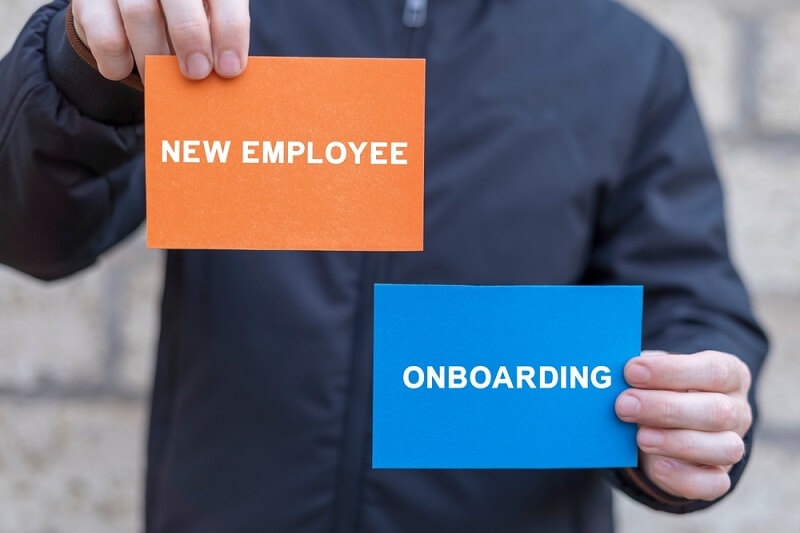Employee Onboarding Process with a Real Training Plan

Let’s get one thing straight—throwing new hires into the deep end and hoping they swim is not a training strategy. It’s a gamble, and it usually costs you time, money, and good people. If you actually want new employees to stay, perform, and fit into your culture, you need a real, structured new hire training plan. No buzzwords. No bloated workshops. Just what works.
Start with the Employee Onboarding Process That Doesn’t Suck
Forget the stiff handshakes and jargon-filled PowerPoints. The employee onboarding process isn’t about a fancy welcome kit or a free pen. It’s about making sure your new hire knows what they’re doing, who they’re doing it with, and how they fit into the bigger picture.
Your onboarding process should:
- Be mapped out before they walk in the door.
- Cover systems, people, expectations, and culture.
- Include real, useful check-ins—not just "How’s it going?” emails.
- Create space for questions and feedback.
- Define short-term goals for the first 30, 60, and 90 days.
Do it right, and you’ll reduce confusion, early resignations, and a whole lot of wasted hours. Most importantly, you’ll build trust.
Don’t Miss: Top Strategies to Retain Employees in Collections Agencies
Build a Training Plan for New Employees That Actually Trains
Don’t hand them a 200-page manual and expect magic. A solid training plan for new employees breaks down their role into learnable chunks. This isn’t theory—it’s execution.
Here’s how you do it:
- Week 1: Orientation, team intros, and a small real-world task.
- Week 2: Tool training + job shadowing.
- Week 3-4: Supervised projects with feedback.
- Month 2–3: Independent work with check-ins and mentorship.
- End of Month 3: Role review + long-term growth discussion.
Also: not everyone learns the same. Mix it up. Give them videos, short guides, hands-on tasks, and live walkthroughs. Make learning bite-sized and repeatable. Don’t rely on theory—give them real tasks that reflect what they’ll be doing every day.
The best training plan for new employees answers this: “What do I need to do today to win tomorrow?”
Your Onboarding Checklist = Your Safety Net
A great onboarding checklist is more than a formality. It’s your training blueprint. Without it, stuff falls through the cracks. With it, nothing important gets missed.
What should be on it?
- Account setups (email, Slack, project tools)
- Access to platforms, apps, or systems
- IT gear and login credentials
- Introductions to direct teammates and other key players
- Role expectations + success metrics
- Early tasks or micro-projects
- Culture rundown (not the fluffy kind)
- First-week check-ins
- Initial feedback form for employee impressions
Don’t overcomplicate it—just make sure the basics are covered. Treat your checklist like a launchpad, not a script.
New Employee Orientation Without the Snooze Fest
Let’s be honest—most new employee orientation sessions are a sleepwalk. That’s because companies forget what orientation is actually for. It’s not just about paperwork. It’s about context.
So keep it tight and useful:
- Start with a no-BS intro to the company—what you do, why it matters, and how they’re part of it.
- Add a walkthrough of tools they’ll actually use.
- Sprinkle in a quick session with HR that doesn’t drone on.
- Cap it with real talk from a team lead. No slides, just insights.
- Include a short Q&A session. Let them speak.
The best new employee orientation answers real questions: How do I win here? What matters to my manager? What does "great" look like in this role?
Orientation isn’t a one-time event. Revisit and reinforce the key themes in week two, week four, and beyond.
Your Staff Training Program Isn’t One-and-Done

If you think the staff training program ends once the onboarding checklist is ticked off, think again. Training is ongoing. Always has been. Always should be.
Here’s how to keep it alive:
- Use a 30-60-90-day structure to track growth.
- Provide role-specific micro-learning.
- Pair them with a mentor they can actually learn from (not just the “available” person).
- Offer real feedback early and often—don’t wait for quarterly reviews.
- Create a space where feedback flows both ways. Ask them what’s working.
- Build pathways for upskilling and lateral learning. Don’t lock people into silos.
A strong staff training program is built on relevance, not rituals. Keep it fresh, practical, and centered on performance.
A Few Things You Should NOT Do
- Don’t assume they know what acronyms mean. Spell it out.
- Don’t ghost them after Week 1. Stay present.
- Don’t wing it. "We just train as we go" is how people quit fast.
- Don’t wait until the exit interview to ask what went wrong.
- Don’t drown them in information they can’t use yet. Pace matters.
This is why a detailed training plan for new employees and a structured employee onboarding process are non-negotiable.
What This Looks Like In Practice (A Simple 90-Day Sample Plan)
Day 1–5: Orientation + admin + shadowing real work + one easy, real task.
Week 2: Tool mastery + intro to systems + first mini-project.
Weeks 3–4: Supervised project + feedback loop.
Month 2: More ownership + deeper projects + team integration.
Month 3: Full autonomy on core tasks + one peer-reviewed presentation + 90-day review.
Post 90 days: Growth roadmap + skills alignment + career path session.
Don’t make it a one-size-fits-all template. Tweak this plan for the role, the personality, and the pace at which the person learns.
Beyond the Basics: Build a Culture of Learning
Want to really stand out as a company that people don’t want to leave? Build training into your culture. Make learning the norm, not the exception.
- Host monthly knowledge-share sessions.
- Offer small-group workshops or demo days.
- Create a shared learning library—internal videos, docs, tools.
- Recognize learning efforts in performance reviews.
People don’t leave companies that invest in them.
A high-functioning staff training program isn’t about one-and-done tasks—it’s about continuous momentum.
Real Talk: Why Most Companies Get This Wrong
Most onboarding programs are designed for the company’s convenience, not the employee’s clarity. That’s the problem. New hires don’t care about your org chart—at least not until they know how to succeed.
Instead of dumping everything upfront, drip the right info at the right time:
- Week 1: Culture, tools, people.
- Week 2: Job expectations, systems.
- Month 1+: Performance standards, goals, and personal development.
Your employee onboarding process has to feel intentional. It needs to feel like someone actually thought it through.
More to Discover: Top Employee Engagement Strategies for Workplaces
Final Word: Training Isn’t a Perk. It’s the Standard.
Want employees to stick around and actually perform? Treat their first 90 days like the launchpad it is. Nail the employee onboarding process. Build a clear, role-specific training plan for new employees. Use your onboarding checklist religiously. Keep your new employee orientation sharp and relevant. And most importantly—treat your staff training program like a long game.
This is how you build teams that get it, stay longer, and hit the ground running.
Done right, training isn’t a cost—it’s a retention machine.
And if your company doesn’t have time to build a proper training experience? Don’t be surprised when your best hires don’t stick around.
This content was created by AI
